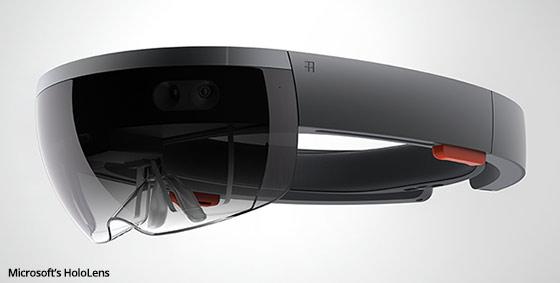Augmented Reality Seen Shifting To Headsets For Immersive Experiences
- by Chase Martin , March 5, 2017
The market for augmented reality devices is expected to grow in the coming years, but may transition from one type of experience to another.
In the next couple of years, most AR devices shipped globally will be basic assisted reality glasses. However, between 2018 and 2022, the majority of AR devices shipped will shift toward mixed reality headsets, according to a new study by Tractica.
By 2022, nearly 23 million augmented reality or mixed reality glasses will be sold per year -- up from 150,000 last year, according to the study.
The types of devices shipped in six years leans toward mixed reality glasses. By 2022, assisted reality glasses will account for 2 million of the devices shipped and 21 million will be mixed reality glasses, according to the study.
Tractica defines assisted reality glasses as glasses that "layer digital images onto the real world without any specific knowledge of the environment" and mixed reality headsets as headsets that have "positional tracking and depth sensors to provide a more immersive experience, enabling interactions with holographic objects."
By Tractica’s definitions, an example of assisted reality would be Google’s Glass and mixed reality would be Microsoft’s HoloLens.
One of the reasons for the market transition is that assisted reality glasses currently remain favored by industrial and enterprise applications. Although the current state of mixed reality headsets is still in the development stages, the study suggests that when consumer-level devices hit the market, there will be more widespread use cases for mixed reality than assisted reality glasses.
The growth of mixed reality devices will begin to gain momentum after next year, and assisted reality glasses will experience most of the augmented reality market growth in the short-term, according to the study.
This seems to be consistent with other longer-term projections for augmented reality and virtual reality.
For example, a recent study by Citi found that virtual reality will account for most of AR and VR market growth over the next few years, but augmented reality will overtake it by 2020, as the IoT Daily reported at the time (AR Market Projected To Reach $1.3 Trillion, 25% Of Online Commerce By 2035).
That study forecasts that the market for AR hardware to grow 68% between 2020 and 2025 and AR commerce to grow even more (78%) in the same period.
Tractica expects the revenue generated by shipments of assisted reality and mixed reality devices combined to grow from $139 million last year to $20 billion by 2022.




We are very bullish on augmented reality, especially when it comes to the consumer market. We think it's going to be much bigger than virtual reality.